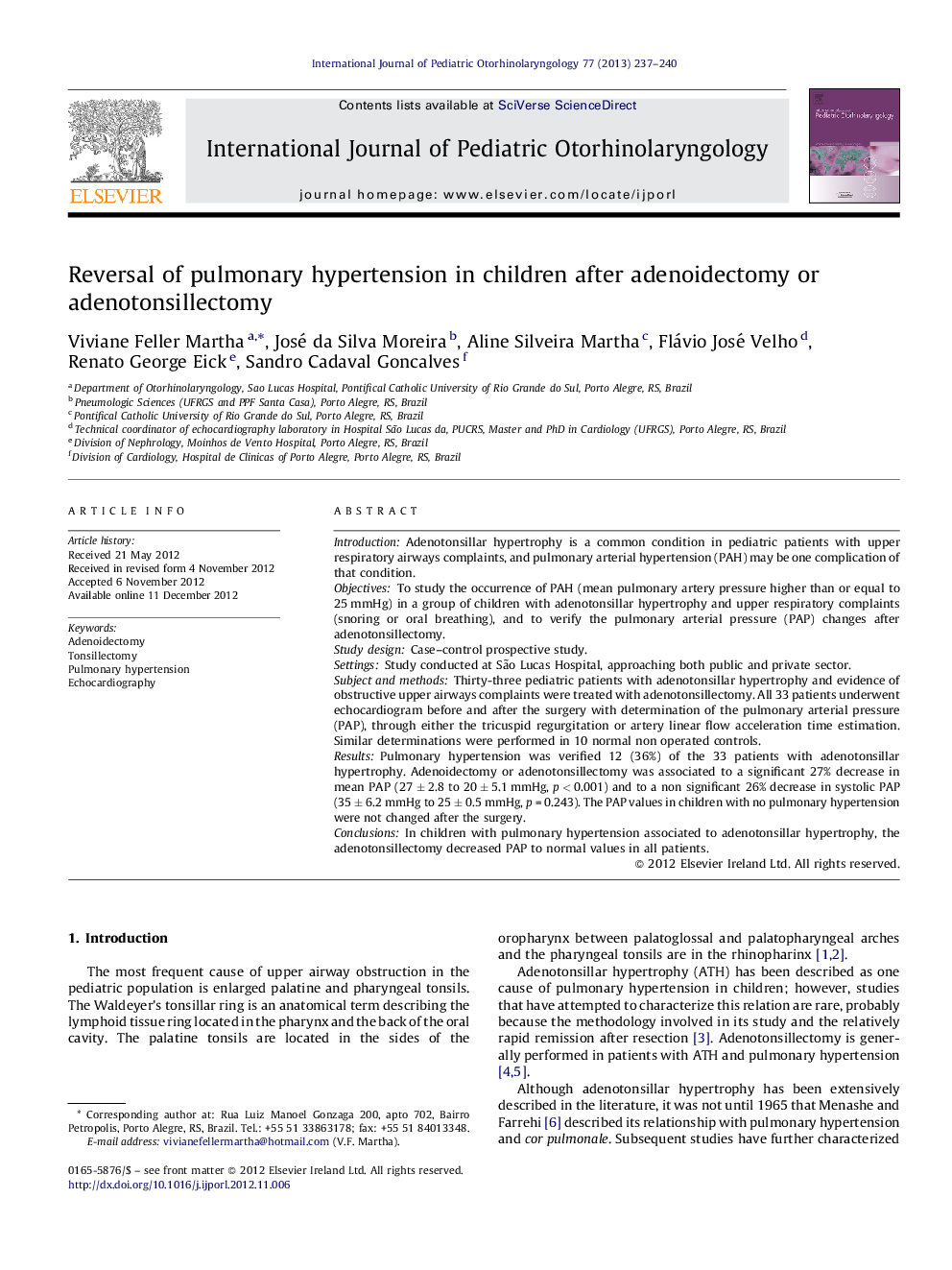| Article ID | Journal | Published Year | Pages | File Type |
|---|---|---|---|---|
| 4113193 | International Journal of Pediatric Otorhinolaryngology | 2013 | 4 Pages |
IntroductionAdenotonsillar hypertrophy is a common condition in pediatric patients with upper respiratory airways complaints, and pulmonary arterial hypertension (PAH) may be one complication of that condition.ObjectivesTo study the occurrence of PAH (mean pulmonary artery pressure higher than or equal to 25 mmHg) in a group of children with adenotonsillar hypertrophy and upper respiratory complaints (snoring or oral breathing), and to verify the pulmonary arterial pressure (PAP) changes after adenotonsillectomy.Study designCase–control prospective study.SettingsStudy conducted at São Lucas Hospital, approaching both public and private sector.Subject and methodsThirty-three pediatric patients with adenotonsillar hypertrophy and evidence of obstructive upper airways complaints were treated with adenotonsillectomy. All 33 patients underwent echocardiogram before and after the surgery with determination of the pulmonary arterial pressure (PAP), through either the tricuspid regurgitation or artery linear flow acceleration time estimation. Similar determinations were performed in 10 normal non operated controls.ResultsPulmonary hypertension was verified 12 (36%) of the 33 patients with adenotonsillar hypertrophy. Adenoidectomy or adenotonsillectomy was associated to a significant 27% decrease in mean PAP (27 ± 2.8 to 20 ± 5.1 mmHg, p < 0.001) and to a non significant 26% decrease in systolic PAP (35 ± 6.2 mmHg to 25 ± 0.5 mmHg, p = 0.243). The PAP values in children with no pulmonary hypertension were not changed after the surgery.ConclusionsIn children with pulmonary hypertension associated to adenotonsillar hypertrophy, the adenotonsillectomy decreased PAP to normal values in all patients.
